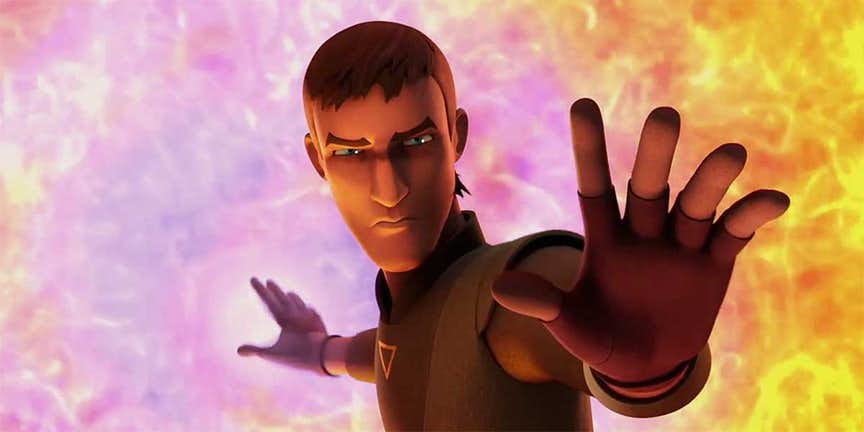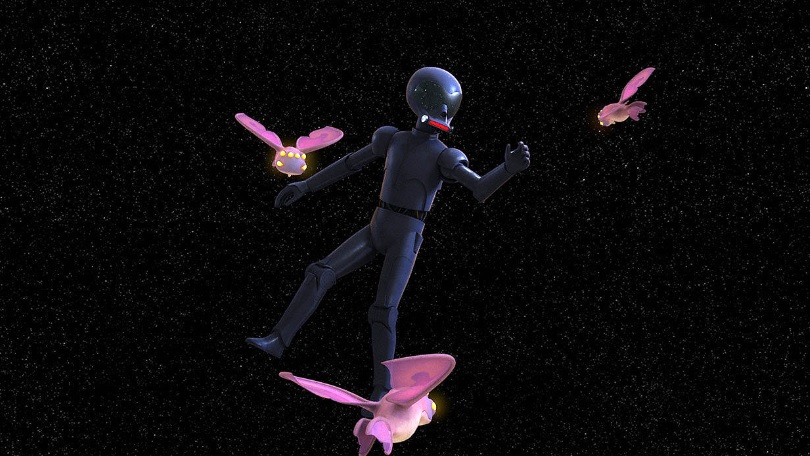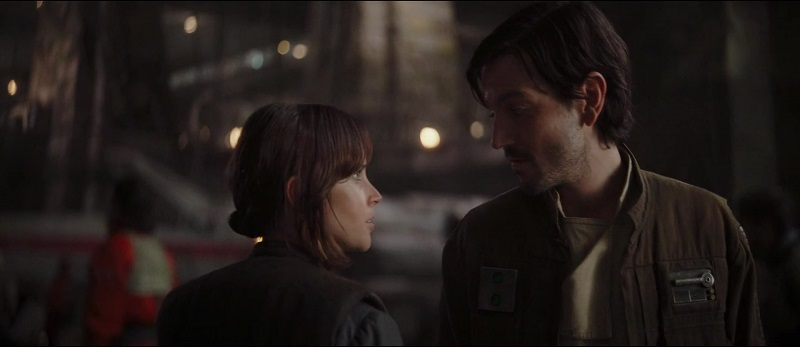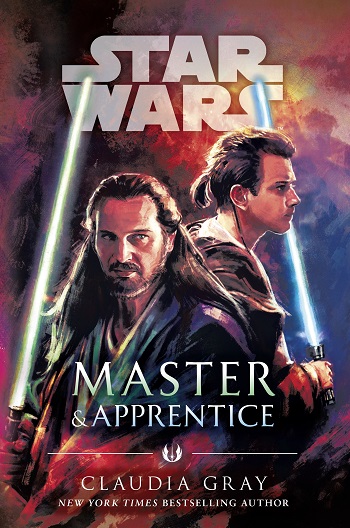While Eleven-ThirtyEight was founded in 2013, the earliest piece of writing hosted here is much, much older. In the summer of 2005, soon after Revenge of the Sith “completed” the saga, Star Wars Insider magazine published a feature by Abel G. Peña and Enrique Guerrero entitled “The 20 Most Memorable Moments of the Expanded Universe”. The piece concluded with a prompt for readers to share their own lists, and that was just the excuse I needed to begin a new blog at StarWars.com, which was a thing they let people do in those days.
The final product was my first major piece of Star Wars writing outside of TheForce.Net, and while I didn’t end up doing much else over there, I remained pretty fond of it, so with the official blogs long since defunct I took the opportunity of ETE’s birth to port the thing over here, where it has lived happily in seclusion ever since.
While I’m normally not a fan of “listicles” (gag) or retrospectives on content long past, that “memorable moments” concept has always stuck with me as one of the more acceptable ways of approaching both things—so with the five-year anniversary of the Star Wars continuity reboot last month I decided this would be a good opportunity for us to stop and look around a bit.
While the ranking that follows is of course despicably subjective, it is the result of an obnoxiously elaborate ranked-choice voting system: each of our nine regular contributors offered their own list of ten moments, with everyone’s top choice counting for ten points, their second choice counting for nine points, and so on. That left us with sixty-two distinct “moments” and several ties, which we then voted on until arriving at a conclusive top twenty.
With no further ado, enjoy, and be sure to check back on Wednesday for Part II! – Mike

20. Kanan Jarrus Goes Out With a Bang, Star Wars Rebels (Ben Crofts)
I knew this would happen. How could I not? I’d kept an eye on the chatter around Rebels, nowhere near full spoilage but enough. So, I knew it would happen, did not know exactly when or where but I knew Kanan wasn’t surviving season four. Logically, with that foreknowledge, it should have had no impact then? Far from it. It still worked very effectively, on both the rational and emotional levels. Part of why it did was that utterly killer aftermath episode that followed Kanan’s explosive finale. It gave the death a sense of weight and meaning, which in turn shows the thought put into it by the creative team. Nor, if you avoid spoilers, save in the most cynical and soulless fashion, is it telegraphed by the show.
Why did I like Kanan as much as I did? Part of the blame lies with John Jackson Miller and the superb novel A New Dawn that kicked off the new material, much as Heir to the Empire did so long ago. This book did a lot; it gave us the first great new villain, Count Vidian, whose corporate catchphrase of ‘forget the old way’ had a wonderfully meta edge to it; it introduced Admiral Sloane; but most importantly it introduced the reader to Kanan and Hera. Even there, the sparks that would later blossom could be seen.
Kanan’s backstory would be further built on by a limited comic series and by the show itself. An ex-Jedi haunted by the horrors of both the Clone Wars and Order 66, looking for purpose in his life, in a time when the Empire rules – what was not to like? Death is, however, part of life. Sacrifice is, at times, a very Jedi trait. So it was that when the time came Kanan embodied the ideals of both accepting death, and doing so for his friends.
 19. Dinner Theater for Governor Tarkin, Leia: Princess of Alderaan (Abigail Dillon)
19. Dinner Theater for Governor Tarkin, Leia: Princess of Alderaan (Abigail Dillon)
Is Jane Austen the main reason I adore this scene? Perhaps, but in my defense, Claudia Gray’s bio in the novel includes the boast, “She will take your Jane Austen trivia any day, any time”, and Leia: Princess of Alderaan contains another reference so direct that I’m glad Pride & Prejudice is in the public domain. So I think the Austen comparison is more than appropriate here.
The thing about Jane Austen is that a ball is never just a ball. A dinner party is never just a dinner party. There are social intricacies at work, plots, double-talk, and whispered secrets, all under the guise of civility. Gray takes that and cranks up the intensity; it’s no longer about who shall marry whom and the most recent scandal of the social circle. The plots are political, the double-talk treachery, and lives hang on whispered secrets.
In an additional twist of brilliance by Gray, the disguise of civility here itself is the underside of Austen’s social intricacies. No one in Austen’s world would dare discuss the notion of a scandal openly; even Lydia’s publicly-known impropriety in P&P is discussed behind closed doors and prim hands. But in the spirit of “more intense,” Breha, Bail, and Mon Mothma fling the notion out before an entire dinner table as a means to divert Governor Tarkin’s attention.
The result is a scene with the intensity of a political thriller carried by the wickedly dry humor of Jane Austen.
18. AP-5 Finds Happiness, Star Wars Rebels (Mark Eldridge)
Star Wars is often at its best when it’s weird, or silly. Even better when it is both. For all its gesturing towards something mythic or profound, at its heart it’s still a space adventure for kids. Lucas’s sense of humor was cheeky and irreverent, and no one at Lucasfilm understands that better than Dave Filoni.
“Double Agent Droid” is one of the funniest Rebels episodes. Its star is AP-5, the dejected and frustrated former Imperial droid who now finds himself trying to bring some kind of order and practicality to the Rebels’ operations. He came into the show as a C-3PO for Chopper, and Stephen Stanton does a fine imitation of Alan Rickman’s performance as Marvin the Paranoid Android in The Hitch-Hiker’s Guide to the Galaxy.
Following a neat and tidy “reverse the polarity” plot resolution which seems designed to annoy science fiction fans who take that kind of thing too seriously, we find AP-5 floating through space. “I feel strangely calm,” he tells us, and as he stares out at the enormity of the universe. He begins to reach an epiphany. “I’m in a world all my own, but I do not feel alone…” Baby neebray surround him like the birds in Snow White, one even nuzzling into his metal hand.

The music rises. Surely, they’re not going to…
Oh God, they are.
AP-5 sings, still in that drawling Rickmanesque monotone (if you want to hear the real thing, google “Intelligence” from Help, I’m a Fish!). It’s the most delightfully weird moment in the Disney era of Star Wars.
AP-5 is caught in a bright light, like a ray from Heaven…but it’s just the Ghost, come to pick him up. “Oh no, go away! I was so happy!” The punchline is the beautifully timed “clang” as he is swept into the Ghost’s cargo bay.
If you want it, there is a deeper meaning to all of this: the episode is about the way humans in the Empire become more droid-like, while the droid that joins the Rebellion becomes more human, an ongoing Star Wars theme. But that’s not what we remember. It’s all about the weirdness, the silliness, and the willingness of Filoni and his team to just go with it.
Whatever happens after Episode IX, I only know one truth: keep Star Wars weird, and keep it silly.

17. “Let them pass in peace”, Rogue One (Ben Crofts)
In no other scene, save perhaps his exit, is Donnie Yen’s Chirrut Îmwe as magnetic a character as he is here. A blind mystic, Chirrut appears to be a vagabond, a homeless tramp. Yet, with his first lines to Jyn, the audience is alerted that he is more than he appears. Chirrut, and his long-suffering (but no less idealistic however he tries to hide it) companion, Baze, are ex-Guardians of the Temple of the Kyber on Jedha. The idea of a person being sensitive to the Force, but unable to wield it in the way of a Jedi or Sith, is intriguing. In Yen’s hands it becomes far, fare more.
At the end of a street shootout between Saw Gerrera’s Partisans and the Imperials, Jyn and Cassian are caught, about to be marched off to interrogation, when Chirrut intervenes. What follows is a martial arts tour de force that few outside of Yen could execute so well. What’s more, throughout the entire sequence Yen conveys the clear sense of how Chirrut is limited by his lack of sight, yet empowered enough by the Force that his other abilities overcome it. A preternatural sense of movement, of place, of where things are and where they will be, all combined with uncannily accurate quarterstaff attacks, attacks that are nonlethal given the troopers’ armor, and an absolute belief in the Force to keep him safe from harm.
I’ve been a fan of Yen’s martial arts films for years. He’s a hugely watchable, very entertaining and capable actor and artist, but in Chirrut? He has one of his best-ever characters. Chirrut is an idealistic, incurable optimist, who truly believes that everyone matters.

16. The Holdo Maneuver, The Last Jedi (David Schwarz)
There are not many moments in Star Wars films that leave the audience literally speechless. Figuratively yes, many of them, as this list shows. But the so-called “Holdo Maneuver” from The Last Jedi managed to leave opening audiences silent using silence itself as a medium, and may well be the most beautifully executed scene in the entire movie.
There’s a brief buildup to the maneuver, enough for us to see that our heroes are in deadly peril. The Resistance is fleeing aboard small defenseless ships that the First Order is shooting down one by one. To cover the Resistance’s escape to Crait, Vice Admiral Holdo (Laura Dern) turns her ship around to face down Snoke’s massive megadestroyer and jumps to lightspeed straight through the enemy fleet, making the ultimate sacrifice as the Raddus tears through the Supremacy and leaves a beautiful trail of devastation behind. Then, as we see the vessels crumble, the movie goes entirely silent. The shot opens, the exposure shifts, and death comes slowly, deliberately and noiselessly. The explosion and the chaos won’t catch up with us until seconds later.
Director Rian Johnson has mentioned in interviews that this stylistic choice was his way to communicate to the audience both the massiveness of the destruction, beyond just showing a very big explosion, and the idea that the whole maneuver was happening in less than a fraction of a second. It was thanks to this choice and ILM’s wizardry that we were given this little jewel.
In a movie that appears to try to challenge Star Wars tropes more often than not, there’s perhaps nothing more stylistically subversive than complete silence. And in a world of louder and louder blockbusters, there might have been nothing more unexpected.

15. “Welcome home”, Rogue One (Sarah Dempster)
Jyn Erso was a different style of protagonist than what we’d seen before. She was angry, she was cynical, and she was out for herself and herself only. We first see her as a little girl who watches her mother get murdered and her father get taken away. She’s then raised by paranoid freedom fighter Saw Gerrera (who’s not exactly what one would call a warm and comforting presence) and then left on her own at age sixteen. In other words, for such a short life she’s gone through a hell of a lot of trauma and learned early that she can’t count on anyone to stick around for long.
Cassian Andor, similarly, is introduced as a cynical Rebel spy who’s been fighting against oppression since he was a child. Though we don’t get much insight into his history it’s not hard to see the walls he puts up between himself and anyone who attempts to get too close. It’s a prison of his own making, one Chirrut insightfully observes he carries wherever he goes.
Which makes this moment between Jyn and Cassian at Yavin Base so beautifully poignant. Two utterly broken people who somehow manage to spark hope in each other again. Two people who’ve known nothing other than war and pain find something to care about again. Two people who are used to having to fight through things on their own, to carry their burdens alone, finally realizing they have someone to lean on. One of the major themes in Star Wars as a whole is that your family is who you make it to be, and nothing exemplifies that better than “Welcome home.”
 14. Sabé Makes a Vow, Queen’s Shadow (Sarah Dempster)
14. Sabé Makes a Vow, Queen’s Shadow (Sarah Dempster)
Queen’s Shadow was the book Padmé fans had been wanting for twenty years. Rarely has Padmé gotten the chance to star in her own story; even in The Clone Wars her episodes tended to be just as much about Anakin as they were about her. But finally we got a coming-of-age novel focusing on her transition from Queen to senator, giving Padmé an interiority she had never before been granted in either Legends or canon. We finally get her perspective on the galaxy, from how she felt during the events of The Phantom Menace to her insecurities and fears as she navigates major life changes without losing her poise and grace.
Even better, the novel was a celebration of women and their friendships. If Padmé had rarely been focused on in twenty years of Star Wars stories then her handmaidens received even less official attention. Here, that changes. We see this group of different women united in their love for Padmé and willingness to protect her with their lives…but who also spend time just hanging out and talking while playing sabacc. Even when Star Wars has had female protagonists, they are almost always surrounded by men and it was a breath of fresh air to see female friendships celebrated and valued. Sabé and her particularly deep bond with Padmé is the biggest throughline of the book, as the two navigate both their love for each other and their inherent power imbalance.
The epilogue is a perfect distillation of everything to love about the story. We see Padmé’s funeral through the eyes of Sabé, who has arguably been her closest confidante since the days of the invasion of Naboo. Sabé is angry with grief and guilt, raging not only against her queen’s untimely death but the rise of the Empire and the changes that had already come to Naboo as a result. Captain Tonra asks her what she’s going to do. Not “What are you going to do without her” but “What are you going to do to make this right?” And immediately Sabé begins making plans to head back to Coruscant, to become a one-woman force of nature to unravel what really happened. If Padmé’s legacy was cut short, Sabé’s love for her is going to see why.
It’s a wonderful ending on its own and really brings home how much the handmaidens are devoted to Padmé and her memory. But then the final two lines of the book manage to end it even better, as Sabé answers a call on her holoemitter, revealed to be from Bail Organa. We don’t actually see what Bail has to say but it’s not hard to imagine what he’s calling about. And what better way for Sabé (and perhaps the rest of the handmaidens) to carry on Padmé’s legacy than fighting for the Rebellion, for her causes, in her honor? And perhaps even directly protecting her daughter? It’s a perfect end to a story that is foremost a celebration of the deep bonds between women.
* * * * *
Wait, don’t click away just yet! It should go without saying that many more great moments deserve to be highlighted than could fit into a top twenty, so I gave everyone the opportunity to include one of their other picks as an “Honorable Mention”, and I’ll be peppering those in throughout this feature. First up are two from Mark and Abigail…
 Honorable Mention: “It matters which side we choose”, Master & Apprentice (Mark Eldridge)
Honorable Mention: “It matters which side we choose”, Master & Apprentice (Mark Eldridge)
There’s a passage in Master & Apprentice that seems written to address a thousand thinkpieces. How can Star Wars be about “good vs evil” and balance? Should the saga follow other franchises into a “greyer” morality?
“Do you ever really think about what [perfect balance] would mean, Qui-Gon?” asks Rael Averross, probably on Reddit. “The darkness would be just as strong as the light. So it doesn’t matter what we do, because in the end, hey, it’s a tie!”
“It matters. Even if there will never be more light than darkness. Even if there can be no more joy in the galaxy than there is pain. For every action we undertake, for every word we speak, for every life we touch – it matters. I don’t turn toward the light because it means someday I’ll ‘win’ some sort of cosmic game. I turn toward it because it is the light.”
Evil will always exist. The balance will tip back and forth. That doesn’t absolve us of the responsibility to help people. The Force will do what it will; all we can do is be kind.
Let no one ever call Qui-Gon a “grey Jedi” again.

Honorable Mention: Tam Ryvora’s Choice, Star Wars Resistance (Abigail Dillon)
Season One of Star Wars Resistance may have been a bit of a slow burn, but when all its pieces were finally aligned, everything began falling into natural, inevitable conclusions. I don’t think I was alone in figuring out where Tam’s allegiances would fall before the finale, but that didn’t stop the distraught reactions across the fandom.
I would argue it’s the most perfect fall crafted in Star Wars, even besting Anakin’s.
Her initial hostility towards Kaz comes from an understandable place. Her begrudging friendship, slowly forming over her trust issues from Hype’s abandonment, is torn out from under her as Kaz’s lies are exposed. Even worse is the fact that people she has explicitly trusted – Neeku and especially Yeager – seem to be in on it, leaving her in the dark.
(The only issue I have is how frequently her exclusion from Kaz’s adventures also meant her exclusion from episodes.)
This, combined with the manipulations of Agent Tierny, gives a glimpse of how the First Order is able to snag a foothold in the galaxy, through a character we’ve become invested in over the course of a season. A character who we want to see come safely home.

I truly love this list and think Tam’s defection is one of the highlights of the new canon.